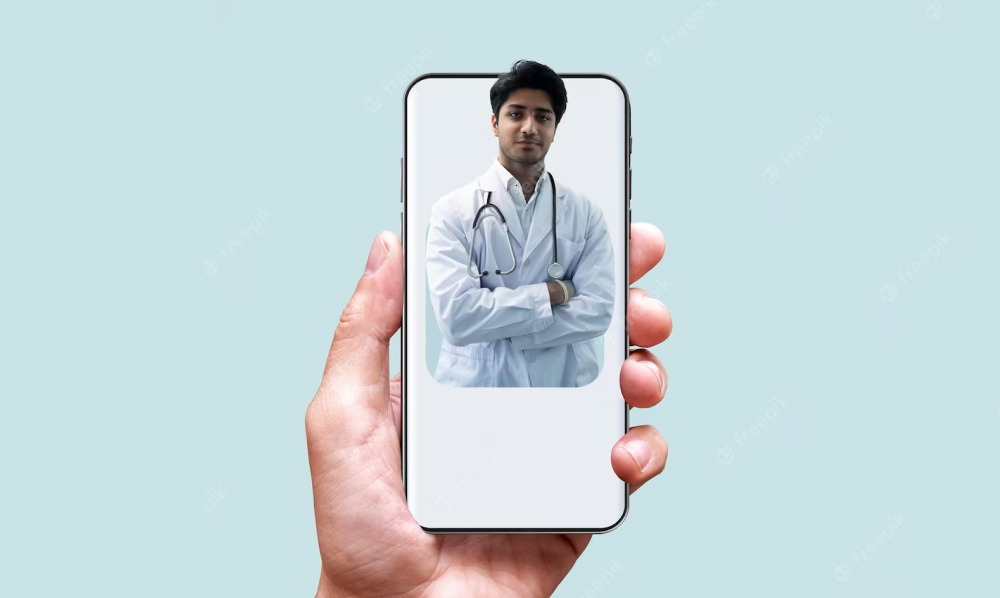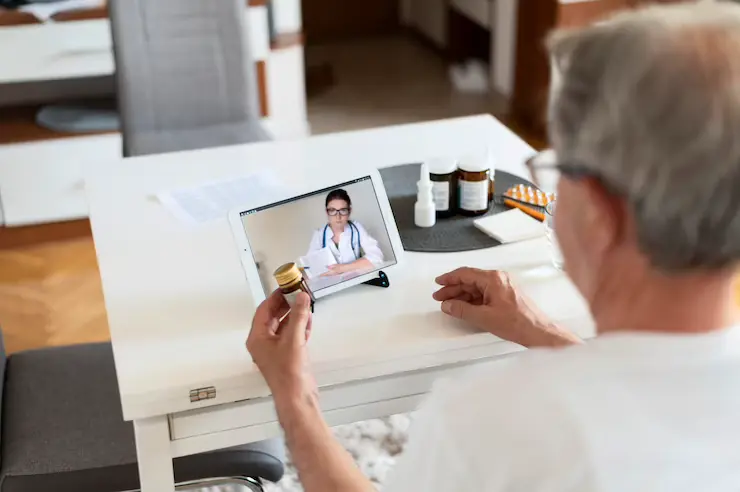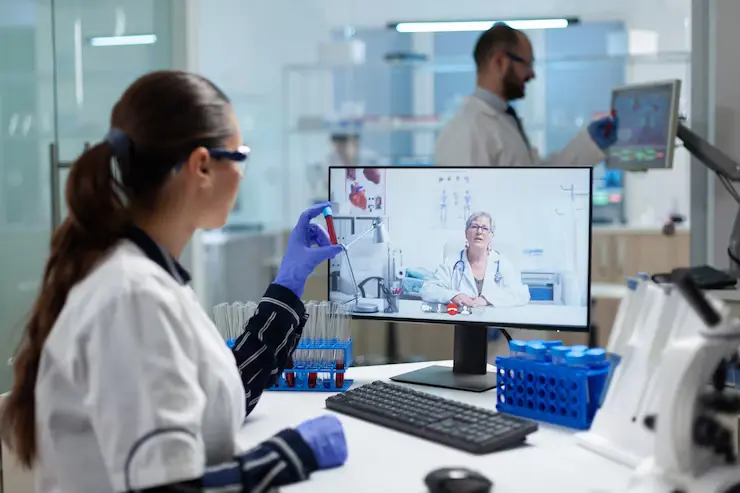
Is Telemedicine as Effective as Usual Care?
The COVID-19 pandemic has led to increased adoption of Telemedicine as a way for patients to receive medical care without leaving their homes. While Telemedicine offers many benefits, such as increased accessibility and convenience, there are questions about its effectiveness compared to usual care.
In this blog post, we will explore the effectiveness of Telemedicine and how it compares to in-person care. We will also discuss the potential for Telemedicine to become a permanent fixture in healthcare and provide recommendations for patients and healthcare providers.
The Effectiveness of Telemedicine: What the Research Says!
Telemedicine, also known as telehealth, is using technology to provide healthcare services remotely. This can include video conferencing, remote monitoring, and mobile health apps. After the outbreak of COVID-19, Telemedicine has experienced a surge in popularity as a way to provide medical care while reducing the risk of exposure to the virus.
Patients can consult with their healthcare providers from the safety of their own homes, avoiding unnecessary trips to hospitals and clinics. This has led to an increased interest in telemedicine and a potential shift in how healthcare is delivered.
There have been numerous research studies that support the effectiveness of Telemedicine.
- A systematic review published in the Journal of Medical Internet Research found that Telemedicine effectively improved clinical outcomes, reducing hospital readmissions and patient satisfaction across various medical specialties.
- A study published in the Journal of the American Medical Association (JAMA) found that Telemedicine consultations resulted in similar clinical outcomes as in-person consultations for patients with diabetes. The study also found that Google Meet Telemedicine of Clinic and Patient Management Plugin Telemedicine consultations resulted in fewer missed appointments and lower costs.
- According to a study conducted by the American Hospital Association, 76% of hospitals are now using Telemedicine, up from 35% in 2010.
- According to a report by McKinsey & Company, telehealth usage in the US increased from 11% of consumers in 2019 to 46% in 2020 due to the COVID-19 pandemic. The report also predicts that up to $250 billion of US healthcare spending could be virtualized.
Telemedicine vs. In-Person Care

Telemedicine and in-person care both have their advantages and disadvantages. Let’s take a closer look at how they compare and contrast:
Advantages of Telemedicine:
- Increased accessibility: Telemedicine can provide healthcare services to patients who live in remote or rural areas where in-person care may not be available or easily accessible.
- Convenience: Patients can consult with their healthcare providers from their homes, eliminating the need to travel to hospitals or clinics.
- Cost savings: Telemedicine can reduce healthcare costs by eliminating the need for travel, reducing administrative costs, and decreasing hospital readmissions.
- Reduced risk of exposure to infectious diseases: Telemedicine can reduce the spread of infectious diseases, such as COVID-19, by minimizing in-person contact.
Disadvantages of Telemedicine:
- Limited physical examination: Zoom Video Patient Consultancy Plugin Telemedicine consultations may not allow for a full physical examination, which can limit the accuracy of diagnosis and treatment.
- Technical difficulties: Technical difficulties, such as poor internet connection or malfunctioning equipment, can interfere with the quality of care.
- Limited treatment options: Telemedicine may not be suitable for all medical conditions, such as emergencies or conditions that require invasive procedures..
- Lack of personal interaction: Telemedicine may lack the personal touch and emotional support that can be provided through in-person care.
Advantages of In-person Care:
- Comprehensive physical examination: In-person care allows for a comprehensive physical examination, which can improve the accuracy of diagnosis and treatment.
- Personal interaction: In-person care can provide patients with emotional support and a sense of comfort through personal interaction with healthcare providers.
- More treatment options: In-person care can provide a wider range of treatment options, such as surgeries and procedures, that may not be available through telemedicine.
- Higher confidence in diagnosis: Patients may have higher confidence in a diagnosis when it is given in person.
Disadvantages of In-person Care:
- Accessibility issues: In-person care may not be easily accessible to patients who live in remote or rural areas.
- Time-consuming: In-person care can be time-consuming, requiring patients to travel to hospitals or clinics and wait for appointments.
- Higher costs: In-person care can be more expensive than telemedicine due to travel and administrative costs.
- Increased risk of exposure to infectious diseases: In-person care can increase the risk of exposure to infectious diseases, such as COVID-19.
- Overall, both Telemedicine and in-person care have their advantages and disadvantages. While Telemedicine can increase accessibility and convenience and reduce costs, it may not be suitable for all medical conditions and may lack the personal touch of in-person care.
The Future of Telemedicine

The future of Telemedicine looks bright as it continues to gain popularity and become a permanent fixture in healthcare. Here are some reasons why:
Technological advancements:
With the ongoing advancements in technology, Telemedicine is becoming more accessible and user-friendly. From developing new mobile health apps to integrating AI and machine learning in healthcare, Telemedicine is poised to become even more effective and efficient in the future.
Cost savings:
As healthcare costs continue to rise, Telemedicine provides an affordable and convenient alternative to in-person care. With Telemedicine, patients can receive care from the comfort of their own homes, eliminating the need for travel and reducing administrative costs.
Patient demand:
Patients are increasingly demanding the convenience and accessibility of Telemedicine. According to a study by the American Medical Association, 80% of patients are interested in using Telemedicine for follow-up appointments, and 60% are interested in using it for initial consultations.
Provider adoption:
Healthcare providers are also embracing Telemedicine as a way to increase patient access to care and improve patient outcomes. The COVID-19 pandemic has accelerated the adoption of Telemedicine among healthcare providers, and many are now offering Telemedicine as a permanent part of their practice.
Remote monitoring:
Telemedicine is also becoming an important tool for remote monitoring of chronic conditions, such as diabetes and heart disease. With remote monitoring, patients can receive real-time feedback and support from their healthcare providers, improving health outcomes and reducing hospital readmissions.
The Role of Telemedicine in Bridging Healthcare Gaps

Telemedicine is being used in various ways to improve healthcare, especially in areas where patients have limited access to healthcare services. Here are some examples of how Telemedicine is being used to improve healthcare:
Rural healthcare:
Telemedicine is particularly useful in rural areas with a shortage of healthcare providers. Telemedicine allows patients to consult with specialists and primary care providers remotely, reducing the need for long travel times and improving access to care. For example, Telemedicine is being used to provide access to mental health services in rural areas where mental health professionals may be lacking.
Mental health services:
Telemedicine is increasingly being used to provide mental health services to patients who may not have easy access to mental health providers. Telepsychiatry, for example, allows patients to receive psychiatric evaluations and treatment via video conferencing. This is particularly useful for patients living in remote areas or with mobility issues.
Chronic disease management:
Telemedicine is also being used to manage chronic diseases such as diabetes and heart disease. Remote monitoring devices, such as blood glucose meters and blood pressure monitors, allow healthcare providers to monitor patients’ health status remotely and intervene when necessary. This can improve patient’s outcomes and decrease the need for hospitalizations.
Urgent care:
Telemedicine is being used to provide urgent care services to patients who may not be able to access a traditional urgent care center. For example, some Telemedicine providers offer virtual urgent care consultations via video conferencing, allowing patients to receive care for minor illnesses and injuries without leaving their homes.
Here’s how you can get it too!